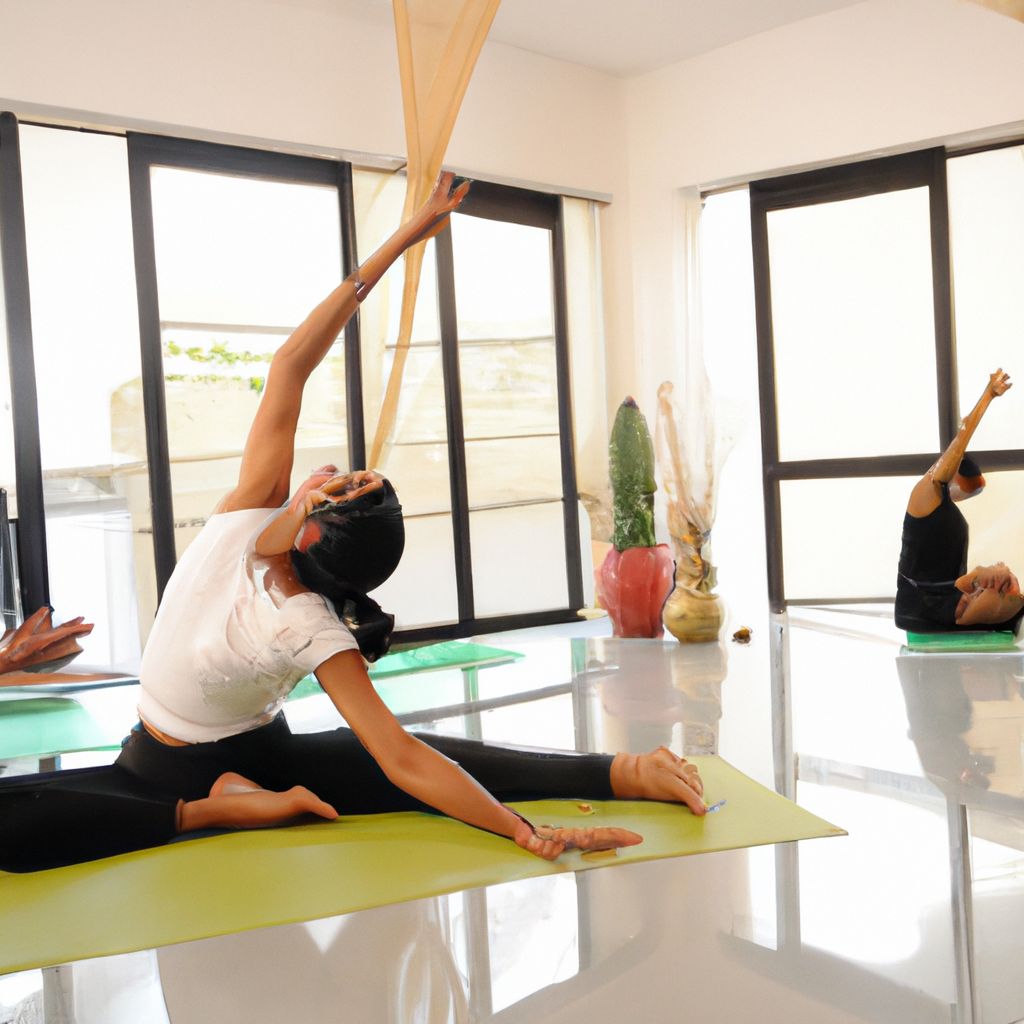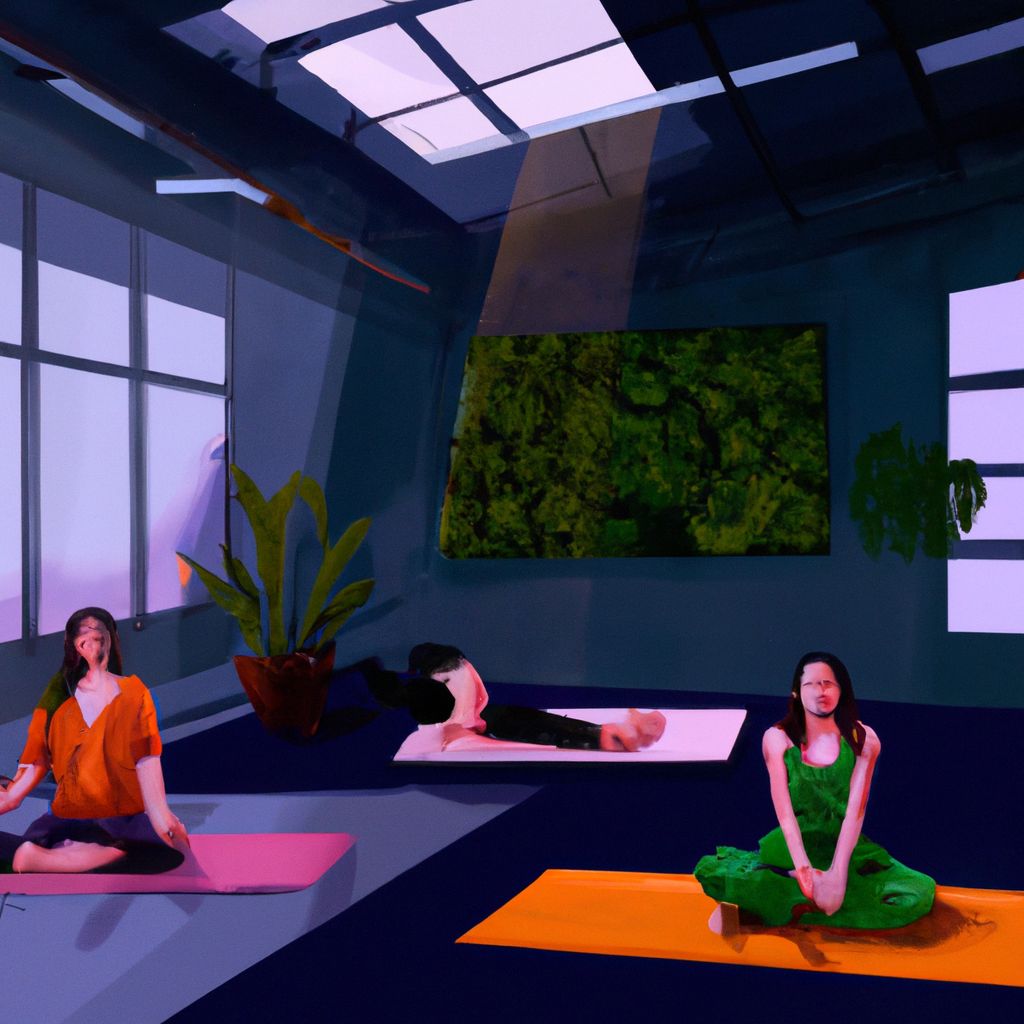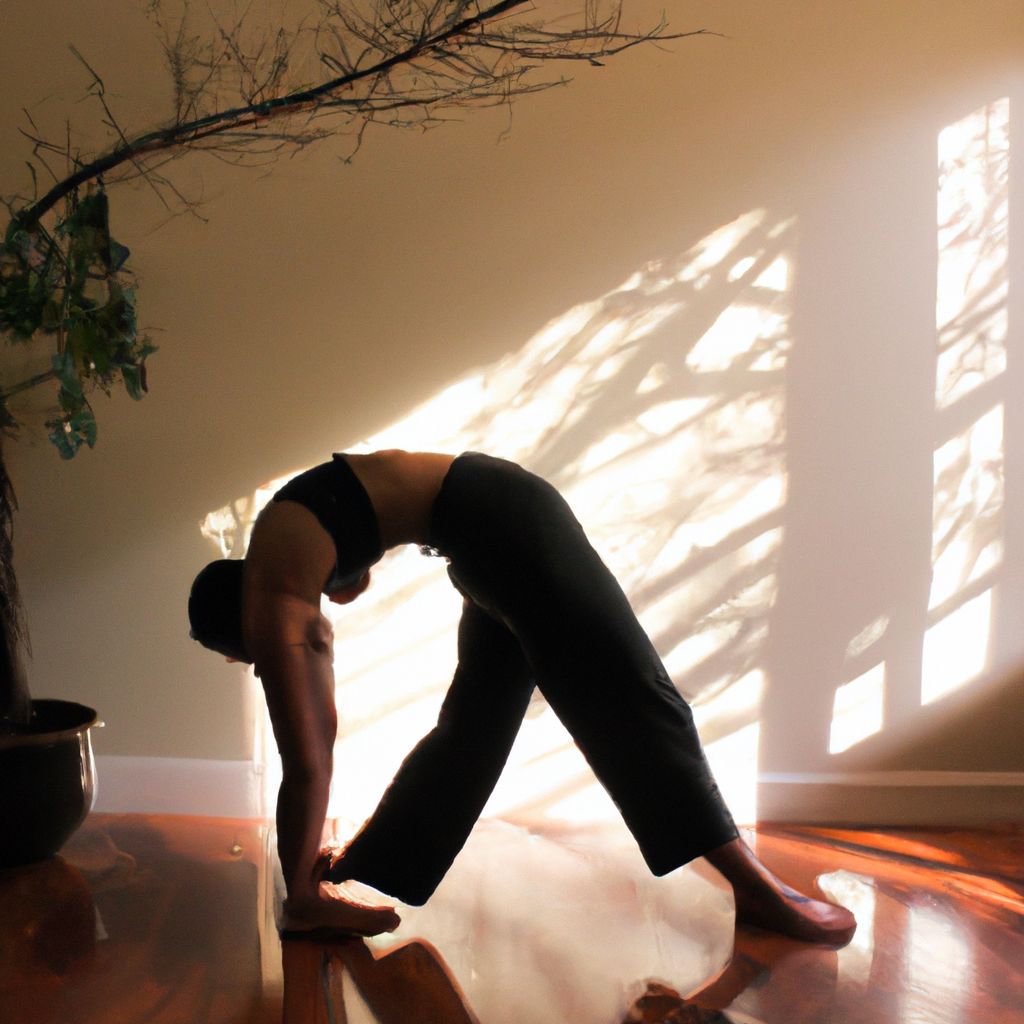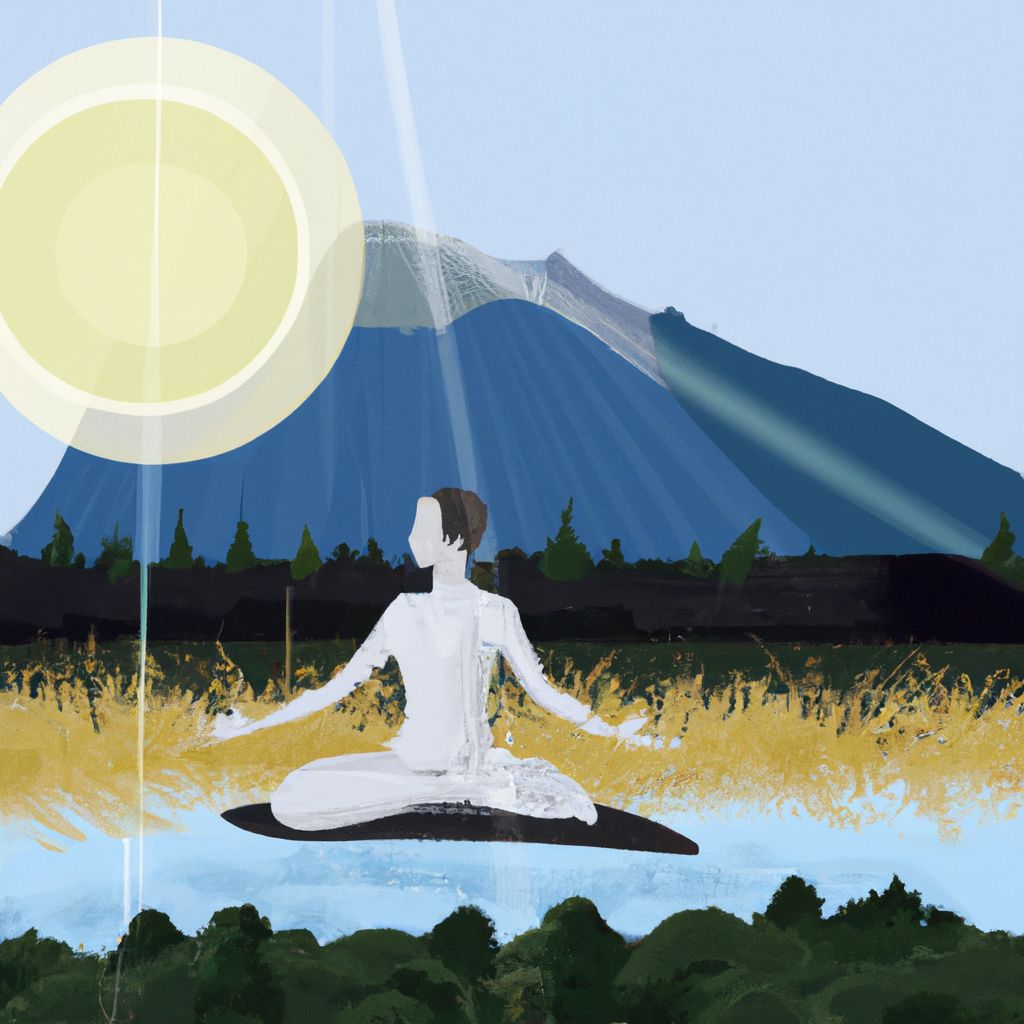- Introduction to Yoga and Pilates
- Understanding the Basics of Yoga
- Deep Dive into Pilates
- Choosing Between Yoga and Pilates
- Combining Yoga and Pilates
- Incorporating Yoga and Pilates into your Daily Routine
- Finding Inner Balance
- Conclusion
Introduction to Yoga and Pilates

The journey to finding inner balance may be one of the most profound experiences of your life. The practice of Yoga and Pilates, two popular mind-body disciplines, can be instrumental in this pursuit. Both disciplines, while distinct in their origins and methods, share a common goal - to harmonize the body, mind, and spirit.
Yoga, with its roots in ancient India, is a holistic practice involving physical postures, breath control, meditation, and ethical disciplines. It is understood not merely as an exercise but as a philosophical system aimed at attaining serenity and enlightenment. According to a report by the National Center for Complementary and Integrative Health, yoga is one of the top 10 complementary health approaches used in the U.S, with 21 million adults having practiced yoga in 2016.
Pilates, on the other hand, was developed in the early 20th century by Joseph Pilates, a German physical-culturist. It is a system of exercises designed to improve physical strength, flexibility, posture, and enhance mental awareness. As per the Pilates Method Alliance, there are over 11 million people practicing Pilates regularly worldwide.
Both Yoga and Pilates are grounded in several principles. Yoga is based on the principles of Yama (ethical standards), Niyama (self-discipline and spiritual observances), Asana (posture), Pranayama (breath control), Pratyahara (sensory withdrawal), Dharana (concentration), Dhyana (meditation), and Samadhi (bliss or enlightenment).
Pilates also has six guiding principles: Centring, Concentration, Control, Precision, Breath, and Flow. These principles make Pilates a workout for the mind as much as it is for the body.
Both practices offer multiple health benefits. Yoga aids in reducing stress, anxiety, and chronic pain, enhancing respiratory function, and promoting sleep quality. Pilates helps improve muscle tone, balance, and posture, boost flexibility, and reduce back pain.
In the quest for inner balance, Yoga and Pilates offer powerful tools to connect with our inner selves, cultivate mindfulness, and promote physical well-being. The journey with these practices can truly be a transformative experience.
Understanding the Basics of Yoga

Yoga, an ancient discipline, is a complex system that engages the body, mind, and spirit. The term "Yoga" is derived from the Sanskrit word "Yuj," which means to unite or join. This signifies the union of the individual consciousness with the universal consciousness, leading to a perfect harmony between the mind and body, man and nature.
The practice of Yoga comprises different elements, including Asanas (postures), Pranayama (breathing exercises), and Dhyana (meditation).
Asanas are physical postures that are performed to develop strength, flexibility, and balance. There are hundreds of different asanas, each with their own benefits and contraindications. Some basic asanas for beginners include Tadasana (Mountain Pose), Vrikshasana (Tree Pose), Adho Mukha Svanasana (Downward-Facing Dog), Sukhasana (Easy Pose), and Savasana (Corpse Pose).
Pranayama, often translated as the control of the life force, is the practice of breath control. The breath is seen as the vital link between our physical and mental aspects. Pranayama exercises are known to have profound effects on our overall well-being. Some common Pranayama techniques include Anulom-Vilom (Alternate Nostril Breathing), Kapalbhati (Skull-Shining Breath), and Bhramari (Bee Breath).
Dhyana, or meditation, is the practice of focusing the mind and calming the spirit. It can involve focusing on a specific object, mantra, or the breath. Regular meditation can help reduce stress, improve concentration, increase self-awareness, and promote emotional health.
The breath plays a significant role in Yoga. The inhalation and exhalation are used as a tool to connect with our subtle energy and to guide the movement in and out of the poses. According to B.K.S. Iyengar, one of the foremost yoga teachers in the world, "The breath must be entwined with the body. Only then does it become prayer."
Understanding these basics of Yoga can give you a firm foundation to start your journey in this discipline. Remember, the practice of Yoga is not about achieving the perfect pose but about exploring your own limits and learning to connect with your inner self.
Deep Dive into Pilates

Pilates is a fitness system that aims to strengthen the body with a particular emphasis on core strength. This helps to improve general fitness and overall well-being. Pilates concentrates not only on physical strength but also on the mind-body connection. While the exercises are done, your mind needs to be constantly aware of your breathing and the way your body moves.
The practice of Pilates is grounded in six core principles: Centering, Concentration, Control, Precision, Breath, and Flow. Centering refers to the concept that all movement originates from the core or center of the body. Concentration and Control imply that every movement is done with full attention to ensure it is performed correctly. Precision is about the quality of the movement rather than the quantity. Breath is used to supply the body with the energy to perform the movement and to help focus the mind. Finally, Flow ensures that the exercises are performed in a smooth, flowing manner.
Some basic Pilates exercises that beginners can start with include The Hundred (a breathing exercise that also strengthens the core), The Roll-Up (a slow, precise move that stretches the spine and the back of the body), Leg Circles (to strengthen the hips and core stabilizers), and The Teaser (an advanced move that strengthens the whole body).
Unlike Yoga, which has a more holistic approach and includes elements of meditation and spirituality, Pilates is more physically inclined and focuses mainly on strengthening the body and increasing flexibility. Both practices, however, emphasize the connection between physical and mental wellness.
Pilates, with its focus on core strength, flexibility, and awareness, can be a valuable tool in your quest for inner balance. As Joseph Pilates once said, "Physical fitness is the first requisite of happiness."
Whether you choose to practice Yoga, Pilates, or both, remember that the journey to inner balance is a personal one. Listen to your body and your mind, and choose the path that feels right for you.
Choosing Between Yoga and Pilates

Choosing between Yoga and Pilates can be a challenging decision as both practices have their unique benefits and considerations. Your choice would largely depend on your personal goals, needs, and preferences. Let's delve into a comparative analysis based on different factors.
Intensity: Generally, Pilates can be more intense as it focuses on core strengthening and uses resistance equipment. Yoga, however, can range from gentle to intense, depending upon the style of Yoga practiced.
Focus: While both Yoga and Pilates aim for a mind-body connection, their core focus differs. Yoga is more holistic, focusing on uniting the body, mind, and spirit. It includes elements of meditation and spirituality. Pilates, however, is more physically inclined, focusing on strengthening the body and enhancing flexibility.
Benefits: Both Yoga and Pilates offer numerous health benefits. Yoga aids in reducing stress, anxiety, and chronic pain, enhancing respiratory function, promoting sleep quality, and increasing flexibility. Pilates helps improve muscle tone, balance, and posture, increases flexibility, and reduces back pain. Pilates can also be particularly beneficial for injury recovery due to its lower impact exercises and focus on strengthening the core.
Your choice between Yoga and Pilates may also depend on your preferred environment. Yoga classes can often be quiet and meditative, while Pilates classes may have a more dynamic and upbeat atmosphere.
In terms of equipment, Yoga is comparatively simpler, usually requiring just a yoga mat. Pilates, on the other hand, often uses various equipment like reformers, Pilates balls, resistance bands, and Pilates circles.
If you are looking for a practice that provides physical fitness along with spiritual growth, Yoga could be the right choice for you. If your primary goal is to strengthen your body, particularly your core, and to enhance your posture, you might find Pilates more suitable.
However, it's not an either/or decision. Many people find that a combination of both Yoga and Pilates can provide a well-rounded fitness regimen. Remember, the ultimate goal is to find inner balance and enhance your overall well-being.
Combining Yoga and Pilates

For those who find it hard to choose between Yoga and Pilates, there's good news: you don't have to. Welcome to the world of Yogilates, a hybrid workout that blends the best of both practices to offer a comprehensive mind-body workout.
Yogilates, a term coined by certified Pilates instructor and yoga practitioner Jonathan Urla in 1997, is a fusion that combines the strength of Pilates and the flexibility of Yoga. It integrates Yoga's emphasis on unity of mind, body, and spirit with Pilates' focus on strength, flexibility, and balance. The result is a system that strengthens the core, improves flexibility, enhances body awareness, and promotes relaxation.
The practice of Yogilates is grounded in the principles of both Yoga and Pilates. It involves a series of controlled movements that engage the body and mind, performed with mindfulness and coordinated with the breath. Yogilates exercises can range from gentle stretches to more challenging strength-building exercises.
Yogilates typically begins with a warm-up sequence to prepare the body and mind for the practice. This could include gentle yoga poses like Child's Pose and Cat-Cow Stretch. This is followed by a series of exercises that focus on core strength, such as Pilates' Hundred and Roll-Up. The session usually concludes with a cool-down sequence to relax the body and mind, including yoga poses like Savasana.
Some basic Yogilates exercises for beginners could include the Pilates Roll-Up, the Yoga Downward-Facing Dog, the Pilates Single Leg Stretch, and the Yoga Warrior II pose. Remember, the aim is not to perform the exercises perfectly but to do them with awareness and intention.
Whether you're a seasoned yogi looking to add some strength training to your routine, a Pilates enthusiast wanting to bring more flexibility and mindfulness into your practice, or a beginner seeking a comprehensive mind-body workout, Yogilates could be an excellent choice for you.
Like Yoga and Pilates, Yogilates is not just about physical fitness. It's a journey of self-discovery and inner balance, a path to connect with your inner self and live a healthier, more balanced life.
Incorporating Yoga and Pilates into your Daily Routine

Incorporating Yoga and Pilates into your daily routine can be a game-changer. These practices can help improve your physical health, enhance mental clarity, reduce stress, and promote overall well-being. However, integrating a new fitness regimen into a busy schedule can be challenging. Here are some tips to effectively incorporate Yoga and Pilates into your daily life.
Start Small: As with any new habit, it's best to start small. Begin with a few minutes of practice every day and gradually increase the duration as your body gets used to the exercises. Remember, consistency is more important than the length of your practice.
Choose the Right Time: The best time to practice Yoga or Pilates depends on your personal schedule and preference. Some people prefer to practice in the morning to energize their body and mind for the day ahead. Others might find an evening routine helps them unwind and relax after a long day. Choose a time that suits you best and stick to it.
Find a Quiet Space: Designate a quiet and comfortable space in your home for your practice. This could be a small corner in your living room, your bedroom, or even outdoors if the weather permits. Having a dedicated space can help create a conducive environment for your practice.
Use the Right Equipment: Invest in a good quality yoga mat and comfortable clothing. If you're practicing Pilates, you might also need some basic equipment like a Pilates ball or resistance band. Having the right equipment can make your practice more effective and enjoyable.
Follow a Balanced Routine: Try to incorporate a mix of asanas (yoga poses), pranayama (breathing exercises), and meditation (for yoga) or core strengthening and flexibility exercises (for Pilates) into your routine. This can provide a balanced workout for your body and mind.
Listen to Your Body: Pay attention to how your body feels during the practice. If any pose or exercise feels uncomfortable, modify it or skip it. Remember, the goal is not to push your limits but to listen to your body and nurture it.
Be Consistent: Consistency is key when it comes to Yoga and Pilates. Make it a part of your daily routine, even if it's just for a few minutes. Regular practice can help you reap the maximum benefits of these disciplines.
Lastly, be patient. The journey to inner balance is a personal and ongoing one. Don't rush the process. Enjoy your practice, and over time, you'll see the transformative effects of Yoga and Pilates in your life.
Finding Inner Balance

Finding inner balance is about cultivating a sense of harmony between your body, mind, and spirit. It's about being in tune with yourself, being present, and living in a state of equilibrium. Regular practice of Yoga and Pilates can be instrumental in this journey.
Yoga, with its holistic approach, aims to unite the body, mind, and spirit. It employs physical postures, breath control, meditation, and ethical disciplines to promote physical health, mental clarity, emotional balance, and spiritual growth. Pilates, with its emphasis on core strength, flexibility, and body awareness, helps improve physical fitness and fosters a sense of embodiment and presence.
Both disciplines offer numerous mental and emotional benefits. According to a study published in the International Journal of Yoga, regular yoga practice can help reduce stress and anxiety, improve mood and well-being, enhance focus and concentration, and boost self-esteem and self-awareness. Similar benefits have been reported for Pilates. A study published in the Journal of Bodywork and Movement Therapies found that Pilates can help reduce stress, improve mood, and enhance cognitive function.
Furthermore, both Yoga and Pilates encourage mindfulness - the practice of being fully present and engaged in the current moment. Mindfulness has been associated with numerous psychological benefits, including reduced stress, improved mood, enhanced cognitive function, and increased self-awareness.
By practicing Yoga and Pilates regularly, you can cultivate a sense of inner balance. You'll learn to listen to your body, to honor its limits, and to challenge it in a nurturing way. You'll learn to calm your mind, to focus on the present moment, and to find peace amidst chaos. You'll learn to connect with your inner self, to accept yourself as you are, and to grow from a place of self-love and self-respect.
Finding inner balance is not a destination but a journey. It's a lifelong process of learning, growing, and evolving. And with the help of Yoga and Pilates, you can embark on this journey with strength, grace, and resilience.
Conclusion

In conclusion, the practices of Yoga and Pilates offer powerful tools to find inner balance. They provide a holistic approach to health that integrates physical fitness, mental clarity, and emotional well-being. From the ancient philosophy of Yoga with its asanas, pranayama, and meditation, to the strength-building core focus of Pilates, these practices offer a comprehensive workout for the body and mind.
Whether you choose Yoga, Pilates, or a blend of both in the form of Yogilates, the journey to inner balance is a personal one. It's about listening to your body, honoring your limits, and nurturing your growth. It's about calming your mind, focusing on the present moment, and finding peace amidst chaos. It's about connecting with your inner self, accepting yourself as you are, and growing from a place of self-love and self-respect.
Incorporating Yoga and Pilates into your daily routine can have transformative effects on your life. They can help reduce stress, improve mood, enhance focus and concentration, boost self-esteem, and increase self-awareness. They can improve your physical health, enhance your posture, flexibility and balance, and promote overall well-being.
So why wait? Embark on the journey to inner balance with Yoga and Pilates. Explore these practices, experience their benefits, and discover the harmony within you. Remember, the journey is as important as the destination, and every step you take brings you closer to finding your inner balance.



